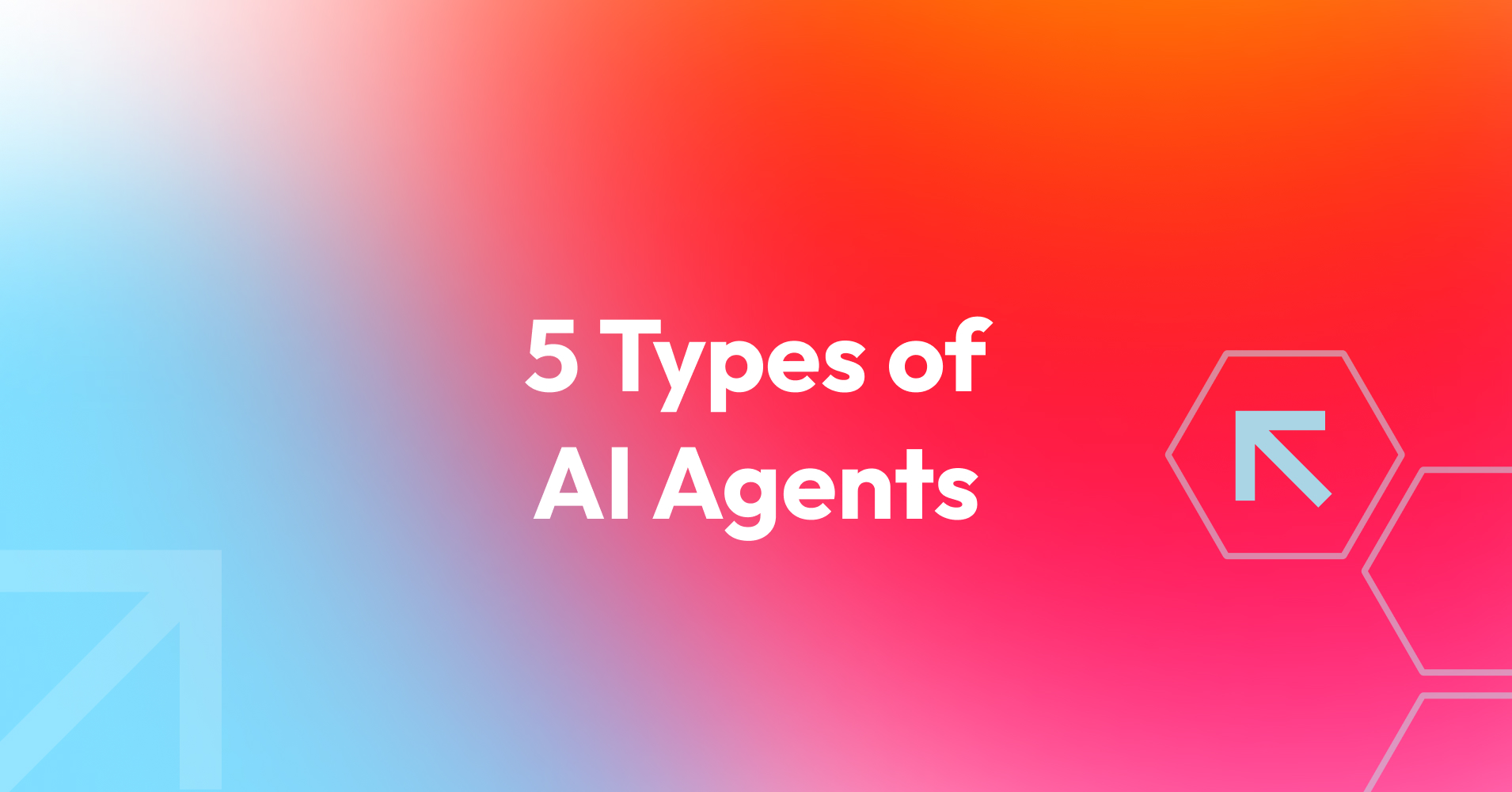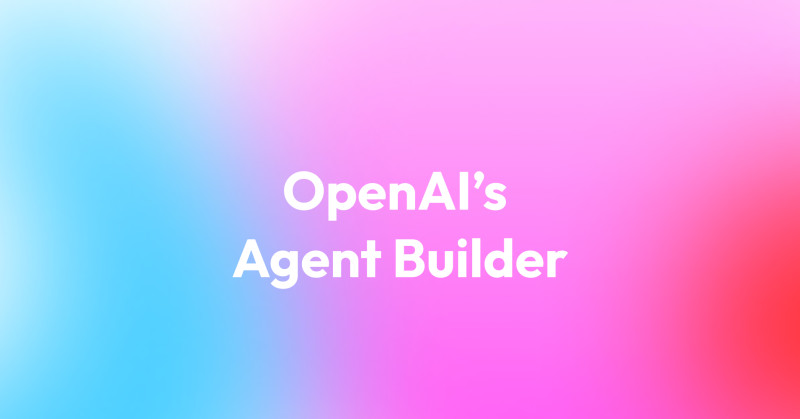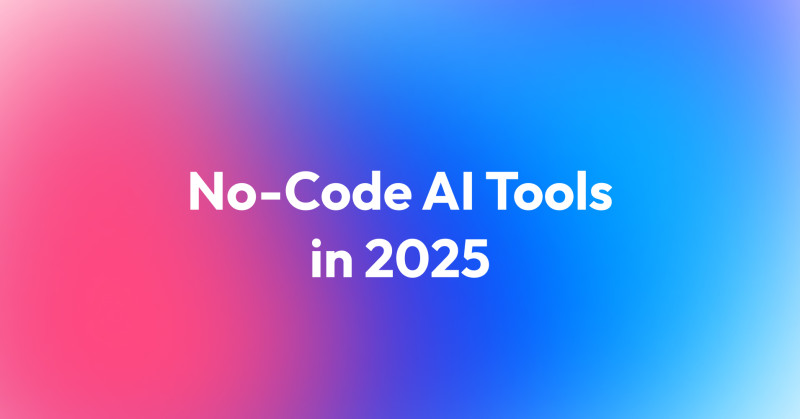Artificial intelligence is transforming how businesses and systems operate - from automating repetitive tasks to helping us make faster, smarter decisions. At the heart of many AI systems are AI agents - autonomous programs designed to interact with their environment, evaluate situations, and act accordingly.

In this article, we’ll explore the different types of AI agents, show how agents work, and explain why understanding agent types matters for anyone using or building modern AI technology.
How Do AI Agents Work?
An AI agent (also referred to as an intelligent agent) is a program or system that perceives its environment through sensors (virtual or physical) and acts upon it using actuators or outputs. These agents are the foundation of many modern AI applications and can operate independently, adjust to feedback, and often improve over time.
Depending on how they’re designed, agents can be simple or complex. Some follow predefined rules, while others learn from experience and adapt. They are used across industries to automate tasks, optimize workflows, and support decision-making.
Examples of AI Agents
AI agents are already embedded in many tools we use daily—often working quietly in the background. A few common examples include:
-
Virtual assistants like Siri or Google Assistant that respond to voice commands and manage tasks.
-
Chatbots on websites that answer customer questions or guide users through support options.
-
Recommendation engines on platforms like Netflix or Amazon, suggesting content based on your behavior.
-
Self-driving car systems that perceive the road, evaluate conditions, and make driving decisions.
-
Smart home devices that adjust lighting, temperature, or security settings based on patterns and preferences.
These examples reflect different levels of intelligence and autonomy, from simple rule-following to learning and adapting. With that in mind, let’s break down the main types of AI agents and how they work.
Types of AI Agents
Before we dive into the different types of AI agents, it's important to understand that not all agents are created equal. Some are designed to handle simple, repetitive tasks, while others are capable of learning, adapting, and making complex decisions. Each type serves a different purpose within an AI system—from basic automation to strategic reasoning. Let’s take a closer look at how these agents are structured, how they operate, and what makes each one unique.
1. Simple Reflex Agent
This is the most fundamental type of AI agent. A simple reflex agent operates solely based on the current input- reacting to specific conditions with predefined actions. It doesn’t store past data or predict future consequences. If a condition is met, it responds in a specific way. That’s it.
Imagine a basic thermostat: when the temperature drops below a set point, it turns the heat on. It doesn’t consider trends, time of day, or user preferences, it reacts to one situation at a time. Simple reflex agents are fast and efficient for very specific, predictable tasks, but they lack adaptability.
These agents are often found in systems where the environment is fully observable and doesn’t require memory or learning - making them ideal for basic automation.
2. Model-Based Reflex Agent
Unlike the simpler reflex agent, a model-based reflex agent maintains an internal representation of its environment - a model of the world. This allows the agent to make better-informed decisions, especially in situations where the current input alone isn’t enough.
For example, a robot navigating a house needs to remember where obstacles are, even if they’re not in its immediate view. It builds and updates a mental map to determine the best path forward. This memory—combined with logic and rules—enables the agent to operate more effectively in dynamic or partially observable environments.
Because these agents use models to simulate possible scenarios, they’re more flexible and capable of handling complex tasks than simple reflex agents. They're common in robotics, home automation, and adaptive systems.
3. Goal-Based Agent
A goal-based agent takes a step beyond reflexes. It doesn’t just respond—it reasons. This type of agent is designed to achieve a specific outcome or set of outcomes, and it evaluates its actions based on whether they bring it closer to its goal.
Consider a self-driving car navigating city streets. It doesn’t just react to obstacles; it plans a route to a destination and adjusts based on traffic, construction, or road conditions. The car knows the goal and makes decisions based on how well each action supports reaching it.
These agents require a deeper understanding of context and often combine search and planning algorithms. They’re particularly useful in dynamic environments where the path to success isn't always obvious.
4. Utility-Based Agent
While goal-based agents aim to reach a specific objective, utility-based agents go further by evaluating how desirable different outcomes are. In other words, they don’t just consider if a goal is met, but how well it is met.
This kind of agent chooses actions that provide the most benefit, value, or satisfaction according to a utility function. For example, in e-commerce, an agent might select product recommendations not just based on relevance but also on customer satisfaction, delivery speed, and cost. It weighs multiple factors to deliver the best overall experience.
Utility-based agents are ideal in situations where multiple good outcomes are possible, and you want to optimize for the best one. They’re used in decision-support systems, game-playing AI, and personalized services.
5. Learning Agent
A learning agent is the most adaptable and autonomous type. It can improve its performance over time by learning from experience—whether through direct feedback or observing outcomes.
These agents typically have four main components:
-
The learning element: which updates knowledge based on new information
-
The performance element: which chooses and carries out actions
-
A critic: which assesses the agent’s performance
-
A problem generator: which explores new actions to improve learning
An example might be a customer service chatbot that gets better at responding to users as it processes more conversations. Initially, it might rely on scripted responses, but over time it fine-tunes its replies through machine learning or reinforcement learning.
These agents are especially powerful in areas where change is constant, and improvement is needed over time—such as fraud detection, recommendation engines, and generative AI tools.
Beyond the Basics: Hierarchical Agents and Agentic AI
Many real-world systems combine different agent types in a layered, hierarchical structure. In this setup, lower-level agents handle routine tasks (like collecting data or processing inputs), while higher-level agents make strategic decisions or evaluate long-term goals.
For instance, a smart factory may use simple reflex agents for machine control, model-based agents for predictive maintenance, and goal-based agents to manage production targets. These layers communicate and coordinate to form a comprehensive AI system.
This concept of agentic AI—where multiple agents work together to solve complex problems—is increasingly relevant in the age of large AI platforms and advanced AI agents.
Real-World Use Cases for AI Agents
Here’s where theory meets practice. Let's take a closer look at AI agents and their possible applications:
-
Customer support: AI chatbots can answer routine questions, escalate complex issues, and automate help desk workflows. Agents help to reduce employees' workload.
-
Marketing and personalization: AI agents collect data and use it to tailor messages, product suggestions, and offers. Personalized offers are better perceived by the customers.
-
Healthcare: Agents assist with diagnostics, appointment scheduling, and patient interaction. Agents can make those processes faster and smoother.
-
Finance: Learning agents detect fraud, manage risk, and recommend financial strategies.
These agents make decisions based on feedback, adapt to new inputs, and help companies automate processes that would otherwise require large teams or constant oversight.
Different Types of AI Agents: An Intelligent Agent in Your Company
As AI technology continues to evolve, so does the power and complexity of AI agents. Whether you’re dealing with simple reflex systems or advanced learning agents, understanding the types of agents in AI helps you choose the right one for your needs.
From goal-based decision-making to utility-based optimization, these agents play a critical role in the success of AI platforms across industries. They allow businesses and developers to create smarter, more responsive, and more autonomous systems that not only complete tasks but also improve over time.
Choosing the right type of agent—or combining multiple types—can be the key to building scalable, intelligent solutions that keep pace with the future.





















